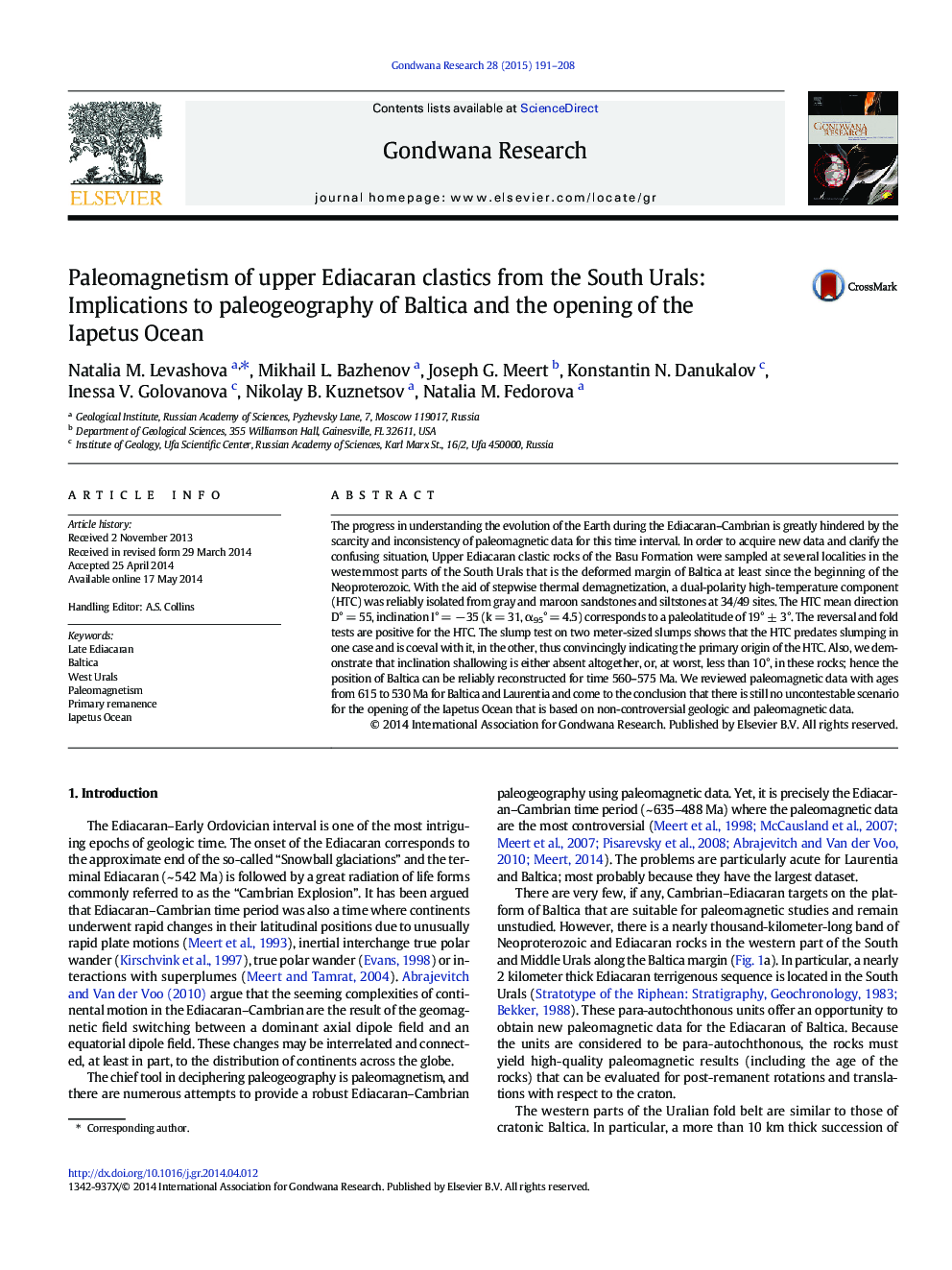| Article ID | Journal | Published Year | Pages | File Type |
|---|---|---|---|---|
| 4726804 | Gondwana Research | 2015 | 18 Pages |
•Paleomagnetism of Upper Ediacaran sediments in the western South Urals is studied.•Fold, reversal and slump tests indicate primary remanence in these rocks.•There is still no coherent reconstruction of the Iapetus Ocean in the Ediacaran.
The progress in understanding the evolution of the Earth during the Ediacaran–Cambrian is greatly hindered by the scarcity and inconsistency of paleomagnetic data for this time interval. In order to acquire new data and clarify the confusing situation, Upper Ediacaran clastic rocks of the Basu Formation were sampled at several localities in the westernmost parts of the South Urals that is the deformed margin of Baltica at least since the beginning of the Neoproterozoic. With the aid of stepwise thermal demagnetization, a dual-polarity high-temperature component (HTC) was reliably isolated from gray and maroon sandstones and siltstones at 34/49 sites. The HTC mean direction D° = 55, inclination I° = − 35 (k = 31, α95° = 4.5) corresponds to a paleolatitude of 19° ± 3°. The reversal and fold tests are positive for the HTC. The slump test on two meter-sized slumps shows that the HTC predates slumping in one case and is coeval with it, in the other, thus convincingly indicating the primary origin of the HTC. Also, we demonstrate that inclination shallowing is either absent altogether, or, at worst, less than 10°, in these rocks; hence the position of Baltica can be reliably reconstructed for time 560–575 Ma. We reviewed paleomagnetic data with ages from 615 to 530 Ma for Baltica and Laurentia and come to the conclusion that there is still no uncontestable scenario for the opening of the Iapetus Ocean that is based on non-controversial geologic and paleomagnetic data.
Graphical abstractFigure optionsDownload full-size imageDownload as PowerPoint slide
